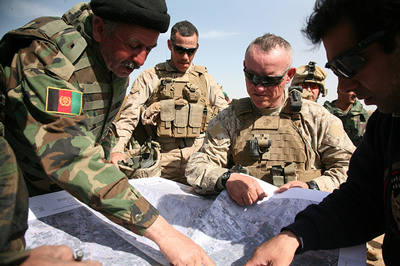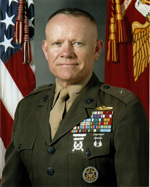Abstract from an interview conducted with Brigadier General Lawrence D. Nicholson, Commanding General, 2nd Marine Expeditionary Brigade, Afghanistan, on Thursday March 4th, 2010
(Source: DOD News Briefing with Brig. Gen. Nicholson from Afghanistan Thu, 04 Mar 2010 18:50:00 -0600)
Question: General, operational question. It’s Otto Kreisher, working for Semper Fi magazine. We know that the MV-22 Ospreys were used in the Marjah operation, but there’s some question as to whether they were doing milk runs into Shah Aziz or whether they actually got into the fight. Could you give me a little rundown on how you used the Ospreys and what they contributed?
GEN. NICHOLSON: Yeah, I’d be glad to. I’ll tell you, if there’s any perception or notion that we’re babying or coddling the Ospreys, you need to come out here. We have done tactical inserts. In fact, when we went into Now Zad behind enemy lines at three in the morning, we used Ospreys, because they were the right platform for that mission, that long-distance carry.
I’ve been flying around Ospreys for the past two weeks almost every day, in and out of small and very rugged LZs in Marjah. So, you know, I know that impression was out there, but I’m telling you straight, we are using the hell out of these things, and we’re putting them in very, very challenging environments, and we are not coddling or babying them at all.So the only thing I could offer you is, come on out here and we’ll put you on one and we’ll fly you in and around Marjah. But certainly no shortage of correspondents has been riding in these things, all hours of the day, daytime, nighttime insertions, sometimes under fire. And so nobody here is babying those things.
Question: How are you doing as far as having available birds?
GEN. NICHOLSON: We brief it every morning. Every morning I get the reliability stats, and we’re averaging about 70 percent. You know, 70 percent is pretty good. That’s, in fact, standard for my helicopter fleet. So we’re doing very well on reliability.

———-
***Posted March 7th, 2010


